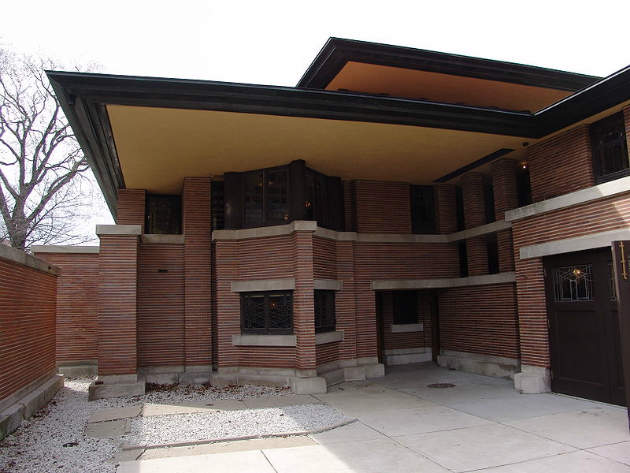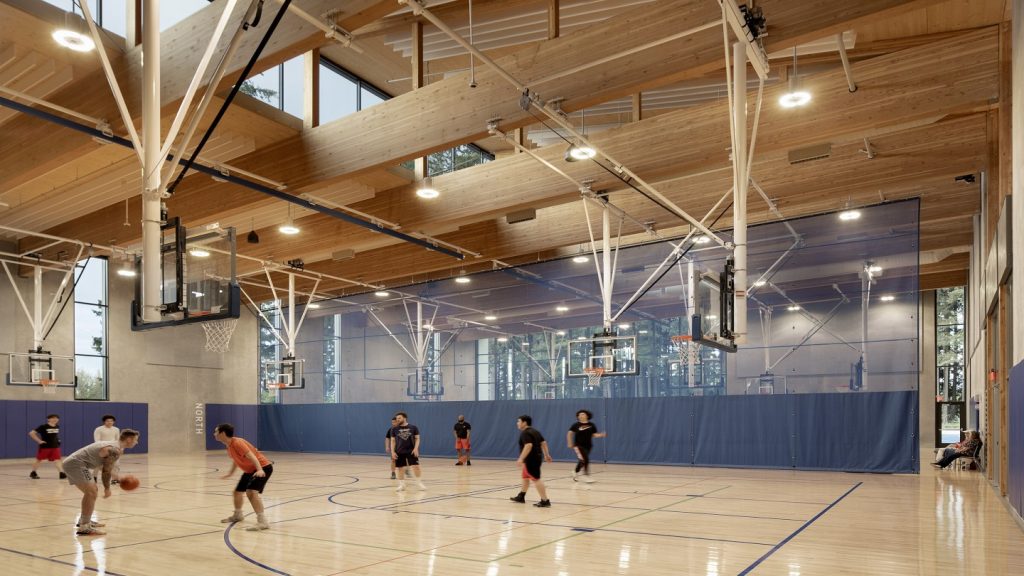

The garage has made an indelible impression on American history and culture and, by extension, on the way the country views itself. Initially the home of the motorcar, the great status symbol and democratiser, it has also been the domain of punk rock bands, inventors, tech entrepreneurs and ordinary everymen looking for a place of escape, reflection, and personal reimagination. Many of the stories surrounding the garage, such as the central role it played in the foundation of Apple, are semi-true or apocryphal, but sometimes the myth is stronger and more important than the truth.
The garage also plays a significant role in the early development of architecture. Frank Lloyd Wright’s Robie House, the iconic example of Prairie School architecture from 1909, was the first to come with an in-built garage. “A car is not a horse, and it doesn’t need a barn,” he told client Fredrick C. Robie, car fanatic and assistant manager at bicycle manufacturer Excelsior Supply Company. And while the garage hasn’t seen a dramatic transformation since then – aside from getting bigger and having electric doors added – it is still integral to the American home.
The future of the garage
But with the rapid development of driverless cars, virtual reality and the decline in automobile ownership fuelled by a move away from the suburbs, what does the future hold for the garage?
This question is at the heart of Hate Suburbia, a new book by sculptor Olivia Erlanger and architect Luis Ortega Govela, which traces the development of the garage from a converted stable into the suburban icon it has become today. In the book they argue that although the garage as a home for the car may be an idea on the way out, the ideals that this deprogrammed space represents – autonomy, creativity, possibility – are alive and well.
“There is this idea of the garagification of space,” explains Erlanger. “The garage as an architectural entity doesn’t necessarily have a place in the future as it exists. But the mindset that the space creates, the idea that you can turn any room into a band room for practice or a workout room, like Kevin Spacey in American Beauty – it’s self-actualised and can be an escape from all the prescribed norms. It acts as a bridge because each person has their own inherent relationship with that kind of space.”
How well do you really know your competitors?
Access the most comprehensive Company Profiles on the market, powered by GlobalData. Save hours of research. Gain competitive edge.

Thank you!
Your download email will arrive shortly
Not ready to buy yet? Download a free sample
We are confident about the unique quality of our Company Profiles. However, we want you to make the most beneficial decision for your business, so we offer a free sample that you can download by submitting the below form
By GlobalDataIn some ways, the way people behave in their garages has had an influence on many types of setting in today’s world. One example can be seen in many modern offices and co-work spaces, particularly in the technology industry, where flat, open-plan layouts are the norm. Such spaces also take cues from the garage in the way they blur the line between home and work. Take, for example, Google’s Googleplex headquarters in Mountainview, California. It uses features such as big sofas and giant rubber balls to create a comfortable, “quasi-domestic space”, not to relax its employees into distraction but to stoke their imagination and productivity.
Such a garagified space is not a private, intimate part of the home we have grown used to, but a public collaborative platform. For better, this creates a stimulating environment in which to work. For worse, it erases the idea of the garage or garagified space as a place of peace and refuge.
Garage as a mirror of society
The future of the garage versus its past raises a dichotomy between the old economy and the new. To many, the America garage is still seen as a refuge for men, a place for them to work on their hobbies or grand schemes without distraction. The future of the garage will not be exclusionary in this way, in the same way that the kitchen has ceased to be the domain of women.
Erlanger draws parallels between this change and the current political situation of the US and the election of Donald Trump as president. She suggests that the changing role of a creative space like the garage moves in step with new ideas of how society should be run, and that the recent election was something of a brake on this transition. It was telling that one of the first things the president elect did on coming to power was to promise to save a Ford car factory in Kentucky, which may or may not have been on the verge of relocating to Mexico.
“It’s a really bizarre time, to have a president who doesn’t necessarily want to move forward but would rather take it back to these really heteronormative 1950s ideas,” she says. “There you see a lot of the ideas that colonised different spaces in the home like the kitchen being for women or the living room being for the TV, where people engaged for the first time with a globalised perspective. That’s almost what Trump seems to be advocate.”
However, the effects of technology, which are helping morph the garage into this flexible, ubiquitous, non-gendered space, will, Erlanger suspects, eventually make their impact on society.
“The garage could only ever be colonised by the individual or taken over by the man, either as his office or his place to make inventions, because the machine came to be because of technological advancement,” she says. “It’s funny to idealise the garage as a nostalgic place in time when actually it has always been a sign of technological advancement, creation and what that allows for in the human mind. We make room.”





